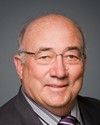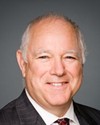Great, thank you.
I've already begged the indulgence of the chair that my presentation is 13 or 14 minutes.
On behalf of the Canadian Association for Suicide Prevention, I would like to thank this committee for the invitation, providing us an opportunity to speak with you today. I've had the opportunity of speaking with some of the members already at other standing committees, so some of what I'm going to say may sound a little familiar to you.
The Canadian Forces has publicly acknowledged suicide as a public health problem, unlike the Government of Canada, which has yet to do so formally. The Canadian Forces has made significant investments in suicide prevention and is developing a strategy to address this issue within the armed forces.
CASP, our board of directors, and our members across Canada commend and are proud of the Canadian Forces for its leadership and commitment to suicide prevention. It is our hope that someday soon the Government of Canada will follow its example, acknowledge suicide as a public health priority, and demonstrate the same type of leadership.
Over the past two decades close to 100,000 Canadians have died by suicide. Last year almost 4,000 Canadians died by suicide, more than the total number of fatalities from all injury-related deaths and homicides in Canada combined.
Canada's suicide rate ranks in the top third of countries with the highest suicide rates. We wonder how many of these deaths may have been veterans. At a recent U.S. suicide prevention conference, Veterans Affairs Secretary Eric Shinseki reported that 20% of that country's 30,000 suicides each year were acts of veterans.
Over three million Canadians—no doubt some of us in this room—have known the pain and anguish that comes when someone we love dies by suicide. Sadly, when someone dies by suicide the pain is not gone. It is merely transferred to family, friends, and communities. Their injuries are largely invisible and mostly suffered in silence.
Suicide is not the result of a single cause. It is complex, and suicide prevention requires a multi-faceted approach. Suicide is the result of an interaction of complex bio-psychosocial and spiritual factors that can include social isolation, trauma, stress, family violence, substance abuse, poverty, poor mental health, and physical and mental illness, to name but a few. Suicide prevention therefore requires a coordinated, multi-faceted approach involving multiple sectors and domains. Unfortunately, in Canada suicide prevention is fragmented and lacks a national vision. There is currently nothing that unifies suicide prevention in our country.
In 2010 the Canadian Forces issued a comprehensive report on suicide prevention in the military. This document will no doubt make important contributions to suicide prevention within that community.The report's conclusion stated that many suicide prevention programs have mass education as their centre of gravity. The expert panel proposes instead that the centre of gravity for the Canadian Forces' program should be the delivery of effective mental health care to those who need it. This is because effective mental health care is what fixes suicidal behaviour.
While we must underscore the significant effects of mental health conditions such as depression and post-traumatic stress disorder and treat them accordingly, it is also important to acknowledge that treatment for suicidality is not necessarily synonymous with treatment of these conditions, nor is it sufficient in itself to reduce the risk of suicide. Our position is that suicide prevention cannot be based on a single centre of gravity, but instead should include many centres and be guided and informed by an overarching national strategy.
The Canadian Forces' efforts should be coupled with the development of a national strategy that targets not only other communities under the jurisdiction of the federal government, such as veterans and federal prisons, but looks to reduce the suicide risk for the general population as well.
While the Canadian Forces' report is an important and progressive document, this work has been undertaken in isolation and is disconnected from what is being done in other communities, regions, sectors, and jurisdictions.
The efforts of the Canadian Forces is just one of many examples of how fragmented suicide prevention is in Canada. The good work being done by the Canadian Forces is not being guided by a larger national vision designed to connect and build upon all the good work that is being done in Canada and worldwide with respect to suicide prevention, intervention, and “post-vention”. Canadian research indicates that, in general, suicide rates are slightly lower among active military personnel and put forward some sound hypotheses to explain this fact. Perhaps one of the strongest protective factors for CF members is that there is likely more connection to peers and to a stronger social network than is the case of the general population.
This protective factor in all likelihood decreases after leaving the service. Up to now, however, Canadian research has excluded veteran populations and discharged military personnel, and only included suicides among actively serving soldiers. It is generally understood that many soldiers will experience traumatic events while in service and may not display any signs of post-traumatic stress while in service. Many service members will also have experienced a trauma even before starting their military careers.
Trauma, however, can lie dormant, slowly ferment over time, and find expression later in life, long after the trauma was experienced. Canadian Forces policy does not address the risk in veterans. Without question, veterans are a high-risk group and require significant attention. Recent research out of the U.K. reported that the risk of suicide among male soldiers who had left the service and were less than 24 years of age was two or three times higher than among the general population and those who are currently serving. Other research, also out of the U.K., indicates that only one in five veterans in that country who died by suicide sought help prior to their death.
Over 15 years ago the United Nations and the World Health Organization recognized suicide as a major public health issue but did not confine the responsibility to a single domain. In 1992 the United Nations asked Canada to take a lead role in developing international guidelines for suicide prevention, which were later adopted by the UN in 1996. The UN guidelines and the subsequent World Health Organization guidelines asked that every country have both a national suicide prevention strategy as well as a national coordinating suicide prevention body.
Shortly afterwards, countries around the world began developing their strategies. To date, all industrialized countries have national strategies, all with the exception of Canada. In fact, not only has Canada failed to act on and recognize both the UN and the WHO guidelines, but it has yet to even acknowledge suicide as a national public health issue and priority. The Government of Canada contributes to the stigma and problem of suicide by its silence, rather than publicly and vigorously declaring its support for suicide prevention in all communities and jurisdictions.
As the UN recognized in 1993, suicide is not the responsibility of a single sector. It belongs to public health, mental health, social wellness, injury prevention, National Defence, Veterans Affairs, and Corrections Canada. We should and must work together. However, at this time the government has not provided us with the mechanisms to do so. There is no national strategy to guide us and no structure or body to promote collaboration and coordination. No one can say it is not my problem or responsibility, and yet to many of us it seems that this has largely been the message that we have heard from the government. To date, the federal government's response--and not just this government, but in all previous governments--to our pleas has been that this is a provincial-territorial responsibility and not a responsibility of the federal government.
Suicide is in fact everyone's responsibility, and everyone has a role to play. The Canadian Forces have recognized their responsibility and the role they play in suicide prevention, as I believe does Veterans Affairs. When will the rest of the government recognize their responsibility and the important role that they can play as well?
Our national government has in the past demonstrated leadership and worked collaboratively with the provinces and territories on numerous public health issues and pandemics, such as H1N1, SARS, and AIDS. It is now time for our national government to get involved in a meaningful way to systemically address Canada's suicide pandemic. While our federal government has made important investments in suicide prevention in first nations communities, it has failed to take action beyond this very limited and selective response and has made no direct investments in suicide prevention outside of those communities.
The good news is that suicide is preventable. We know what to do, and we can do it. None of us, including the Canadian Forces or Veteran Affairs, can or should do it or go it alone. We are all in this together.
For the past seven years CASP has been offering the Government of Canada the gift of a national strategy for suicide prevention. This strategy was first published in 2004, and a second edition in 2009. Unfortunately, our gift to the government keeps being returned. This strategy has received international as well as provincial and territorial recognition. If the government does not want or like this particular gift, then at least let it say so, acknowledge that something is needed, and take a leadership role in calling all stakeholders together to build something better.
Both Scotland and England launched national suicide prevention strategies in 2002, and both countries later reported a fall in the overall rate of suicide in the general population. In fact England recorded its lowest suicide rate ever and saw a reduction of 20% in deaths by suicide. England determined that if there was a 20% reduction in suicides, their national strategy would be cost-saving in terms of deaths avoided and quality of life adjustments. Scotland calculated their entire strategy would be paid for if only five additional lives were saved.
In 2001 the Surgeon General of the United States issued the national strategy for suicide prevention. Inherent in the strategy was an acknowledgement that suicide was a serious public health problem and was preventable. The U.S. strategy, like Scotland's and England's, established a common reference point that allowed disparate elements of the suicide prevention movement to see their own priorities, while influencing each of them to work within the overall framework. It also served as a guide for identifying shared goals that provided a credible rationale for gaining public support. The strategy also served as a wide-ranging catalyst for social change, with the power to transform attitudes, policies, and services. One of the most active and key partners in the U.S. strategy is the Department of Defense.
There are many good things happening across this country in the field of suicide prevention. However, one region, department, or sector does not know what the others are doing. There is no system in place to share and exchange information, promote and build best practices, coordinate research, cross-pollinate ideas, coordinate our efforts, and collaborate. Simply put, we are not communicating with one another and working and learning together. There is also no national public awareness and education on suicide prevention, nor support for evaluating existing initiatives against a standard.
In a recent conversation that I had with one of your colleagues in December, a fellow MP, we had an opportunity to discuss this issue. In the course of that conversation it was again expressed to me that this was a provincial issue and responsibility. The analogy was used that you don't bring in an electrician--the federal government--to do the job of a plumber: the provinces and territories. If we follow that analogy, while an electrician shouldn't tell a plumber how to do their job or fulfill their responsibilities, we would suggest that you still need both to build a house and that you need a good contractor to facilitate communication and planning.
It is our belief that it is the role and responsibility of the government to ensure that suicide prevention has a contractor--in other words, a funded national coordinating body. The first litmus test for any country when it comes to judging its efforts to promote suicide prevention is whether there is a national coordinating body. Canada has not passed this test.
Our national government has in the past demonstrated leadership and worked collaboratively with the provinces and territories on numerous public health issues and pandemics, such as H1N1, SARS, and AIDS. We have pointed out to previous governments, and the current one, the economic advantages of a national suicide prevention strategy, but we know that our concern cannot be just about saving money. It's about doing the right thing, saving lives and keeping families from being torn apart and traumatized by suicide.
We are talking about our brothers and sisters, mothers and fathers, aunts, uncles, cousins, friends, co-workers, and the people we pass on the street every day. We are talking about people who served our country and made enormous personal sacrifices that most of us cannot fully comprehend. We need to ensure that we keep our veterans safe, just as they kept us safe.
In conclusion, what can the Government of Canada do?
We are asking that the Government of Canada, with your support, formally recognize suicide as a serious public and community health and injury prevention issue and policy priority; appoint and adequately fund a national suicide prevention coordinating body that will serve as a knowledge broker, promote knowledge exchange, best practices, research and communication; and commit to working cooperatively with that national coordinating body, the provinces, and the territories on establishing a national suicide prevention strategy.
We believe that positive changes are accomplished through informed collaboration. CASP would welcome any opportunity to work with this committee, Veterans Affairs, the Department of National Defence, and the Department of Health to move suicide prevention, intervention, and postvention forward across Canada.
Too many people's lives are being cut short. Too many people are being deprived of a future that could be hopeful and fulfilling. Too many people and families are being deprived of loved ones who would have continued to enrich their lives and our communities. There are hundreds of thousands of people in this nation whose lives have been forever altered by a tragic and needless suicide death. Some of them are your constituents. Some of them may be your neighbours, your friends, or your family.
Suicides are preventable. There is hope, and with your support we can and will save lives and heal those who grieve.









